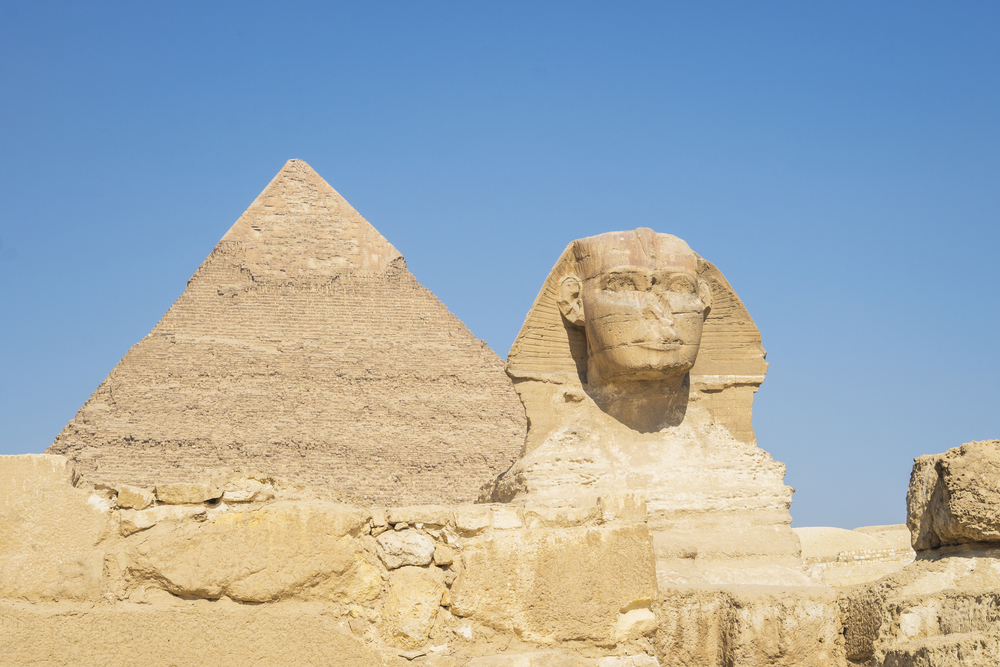
A Guide To Traditional Building Materials For Period Property Restoration
Restoring a period property is a labour of love that requires a deep understanding of historical architecture and a commitment to preserving the charm of
Menu

Restoring a period property is a labour of love that requires a deep understanding of historical architecture and a commitment to preserving the charm of

In a world that’s becoming increasingly environmentally conscious, many homeowners and renovators seek eco-friendly alternatives for their projects. Whether it’s a historic restoration, redecorating with

In the realm of urban renewal, sustainability has become a cornerstone of modern development. The need for environmentally conscious solutions has never been more apparent

Lime mortar is a traditional building material that has been used for centuries in construction. It is composed of lime, aggregate, and water, with optional additives depending on specific requirements. Lime mortar is renowned for its excellent workability, durability, and compatibility with various types of masonry materials. Its unique properties make it an ideal choice for preserving heritage architecture.
The use of lime mortar can be traced back to ancient civilizations, where it played a pivotal role in constructing monumental structures that still stand today. Lime mortar is a traditional building material composed of lime, aggregate, and water, with optional additives depending on specific requirements. Lime mortar has played a significant role in the construction of iconic structures throughout history, from ancient civilizations to medieval castles, Renaissance palaces to colonial settlements. Its unique properties and compatibility with historic materials have made it an indispensable choice for preserving and restoring our architectural heritage.
One of the earliest examples of lime mortar usage can be found in ancient Egypt. Lime mortar was a fundamental component of the construction techniques employed in the building of pyramids, temples, and tombs. The Egyptians discovered that lime, when mixed with water and various aggregates, produced a highly durable and cohesive material capable of withstanding the test of time.
During the Roman Empire, lime mortar reached new heights of sophistication and versatility. Roman engineers perfected the art of using lime mortar, which became an integral part of their architectural achievements. The famous structures such as the Colosseum and the Pantheon owe their longevity and grandeur to the skilful application of lime mortar. The Romans also understood the material’s ability to flex and breathe, allowing structures to withstand natural forces and prevent moisture-related damage.
As Europe entered the medieval era, lime mortar continued to be extensively used in the construction of castles, cathedrals, and fortifications. Gothic architecture, with its intricate stone vaults and towering spires, relied heavily on lime mortar to bind together the elaborate stonework and create stable structures. The use of lime mortar contributed significantly to the awe-inspiring beauty and structural integrity of these medieval marvels.
During the Renaissance, the influence of ancient Roman architecture led to a revival in the use of lime mortar. Renaissance architects, inspired by the classical styles, embraced lime mortar as a means of recreating the splendour of ancient Rome. This period witnessed the construction of magnificent palaces, public buildings, and churches, where lime mortar played a crucial role in achieving architectural harmony and long-lasting construction.
Lime mortar also made its mark in colonial America, where early settlers utilised this versatile material for constructing homes, public buildings, and churches. The use of lime mortar was instrumental in establishing the enduring structures that now serve as landmarks and reminders of the nation’s early history.
The unique properties of lime mortar make it an indispensable material for the preservation of heritage architecture. Its distinct characteristics offer several benefits that contribute to the longevity and authenticity of historic structures. Let’s explore some of these properties and their significance in heritage preservation:
Lime mortar is a breathable material, allowing moisture to escape from the masonry. This breathability helps prevent moisture build-up within the walls, reducing the risk of decay and structural damage. Additionally, lime mortar has a degree of flexibility, enabling it to accommodate minor movements in the building caused by settlement or thermal expansion. This flexibility helps to minimise cracking and ensures the long-term stability of heritage structures.
Lime mortar is highly compatible with various types of historic masonry materials such as stone, brick, and terracotta. Its composition and properties closely resemble those of the original mortars used in historic buildings. Using lime mortar in restoration and repair work ensures a harmonious match with the existing masonry, maintaining the historical integrity and aesthetic value of the structure.
Lime mortar possesses the ability to self-heal minor cracks and gaps over time. Through a process called carbonation, lime mortar absorbs carbon dioxide from the air and converts it into calcium carbonate, effectively closing small voids and maintaining the overall integrity of the mortar joints. This self-maintenance characteristic contributes to the long-term durability and structural stability of heritage buildings.
Lime mortar has a higher permeability than modern cement-based mortars. This permeability allows for the migration of moisture and salts through the mortar, preventing salt build-up within the masonry. Salt damage is a common issue in heritage buildings, and using lime mortar helps mitigate this risk, as it allows salts to be drawn out and evaporated from the surface.
Lime mortar is a natural and environmentally friendly material. It can be easily removed without causing significant damage to the original masonry, allowing for reversible repairs and interventions. Lime mortar is also non-toxic, sustainable, and has a low carbon footprint compared to cement-based alternatives, aligning with modern conservation principles and sustainable construction practices.
Lime mortar’s texture, colour, and finish closely resemble those of historic mortars, enabling the replication of the original aesthetic appearance. The use of lime mortar in restoration projects ensures the preservation of the visual character and authenticity of heritage architecture, enhancing the cultural and historical value of the structure.
By leveraging the unique properties of lime mortar, preservation professionals can safeguard heritage buildings, ensuring their structural integrity, historical accuracy, and long-term sustainability. It is through the careful selection and application of lime mortar that we can continue to appreciate and cherish the architectural treasures of the past for generations to come.
Lime mortar and cement are two common materials used in heritage restoration projects. While both have their merits, there are distinct differences between the two. Let’s compare lime mortar and cement in the context of heritage restoration:
Lime mortar is the traditional material historically used in the construction of heritage buildings. By using lime mortar, restoration projects can maintain the authenticity and historical accuracy of the structure. Cement, on the other hand, is a modern material that was not commonly used in historical construction practices. Using cement in restoration projects may compromise the architectural integrity and visual authenticity of the building.
Lime mortar is breathable and flexible, allowing moisture to escape and accommodating slight movements in the masonry. This characteristic is crucial for the preservation of heritage structures, as it helps prevent moisture-related damage and minimises the risk of cracking. Cement, in contrast, is less breathable and more rigid, which can trap moisture within the walls and potentially lead to deterioration of the masonry over time.
Lime mortar continues to play a vital role in contemporary heritage conservation efforts around the world. Its unique properties and compatibility with historic materials make it an invaluable choice for preserving and restoring heritage architecture. Let’s explore some case studies and success stories that highlight the successful use of lime mortar in modern heritage conservation:
The conservation of Edinburgh Castle, a UNESCO World Heritage Site, utilised lime mortar extensively. Lime mortar was employed in the repair and repointing of the castle’s historic stonework, ensuring compatibility and authenticity. The breathability of lime mortar helped mitigate moisture-related issues, preserving the structural integrity of the castle while maintaining its historical aesthetics.
After the devastating fire in 2019, the restoration of Notre-Dame Cathedral in Paris required careful consideration of materials. Lime mortar was chosen for the reconstruction work due to its compatibility with the original stonework. The use of lime mortar allowed for a seamless blend with the existing masonry, preserving the cathedral’s architectural integrity and historical significance.
The restoration of the iconic Taj Mahal employed lime mortar as the primary material for repair and conservation. The use of lime mortar helped stabilise the delicate marble structures and intricate carvings. Its compatibility with the original construction materials ensured a seamless repair process while maintaining the visual authenticity and grandeur of this UNESCO World Heritage Site.
Lime mortar played a crucial role in the preservation of the Alhambra Palace in Granada. Lime mortar was used to repair and consolidate the intricate plasterwork, known as “Mudejar” or “stucco” in the palace. The self-healing properties of lime mortar allowed for the consolidation of the delicate stucco designs, ensuring their long-term preservation.
Lime mortar has been extensively used in the ongoing restoration and maintenance of the historic buildings in Colonial Williamsburg, Virginia. Lime mortar repairs and repointing have helped preserve the authenticity and structural stability of the colonial-era buildings, showcasing the importance of lime mortar in maintaining the character and charm of a living historical town.
These case studies demonstrate the successful application of lime mortar in contemporary heritage conservation projects. Lime mortar’s compatibility with historic materials, breathability, flexibility, and aesthetic benefits have been instrumental in preserving the authenticity, structural integrity, and visual appeal of iconic heritage sites worldwide. As conservation practices continue to evolve, lime mortar remains a trusted and essential material for safeguarding our architectural heritage for future generations.
Lime mortar stands as an invaluable material in the preservation and safeguarding of our architectural legacy. Its historical use in construction, unique properties, and compatibility with heritage buildings make it an indispensable choice for heritage conservation projects.
Throughout history, lime mortar has been utilised in iconic structures, from ancient civilizations to medieval castles, Renaissance palaces to colonial settlements. Its versatility and reliability have withstood the test of time, contributing to the longevity and grandeur of these architectural treasures.
The distinct properties of lime mortar, such as breathability and flexibility, enable the preservation of historic structures by allowing for the dissipation of moisture, accommodating movement, and reducing the risk of cracking. Its compatibility with various masonry materials ensures a seamless bond with the existing structure, maintaining authenticity and visual harmony.
Lime mortar’s self-healing characteristics, reversible nature, and minimal environmental impact further enhance its significance in heritage preservation. It promotes sustainable conservation practices while respecting the original materials and aesthetics of the buildings. By using lime mortar, we can ensure the long-term sustainability, structural stability, and visual authenticity of our architectural heritage.
Through case studies and success stories, we have witnessed the successful application of lime mortar in contemporary heritage conservation projects worldwide. From the restoration of iconic landmarks like Edinburgh Castle and Notre-Dame Cathedral to the preservation of cultural gems like the Taj Mahal and Alhambra Palace, lime mortar has proven its efficacy in safeguarding our architectural legacy.
As we move forward, lime mortar will continue to be a trusted material for heritage restoration and preservation efforts. Its timeless appeal, compatibility with historic materials, and commitment to authenticity make it an essential tool in the hands of conservation professionals. By embracing lime mortar, we can ensure that future generations can appreciate and cherish the beauty, history, and cultural significance of our architectural heritage.